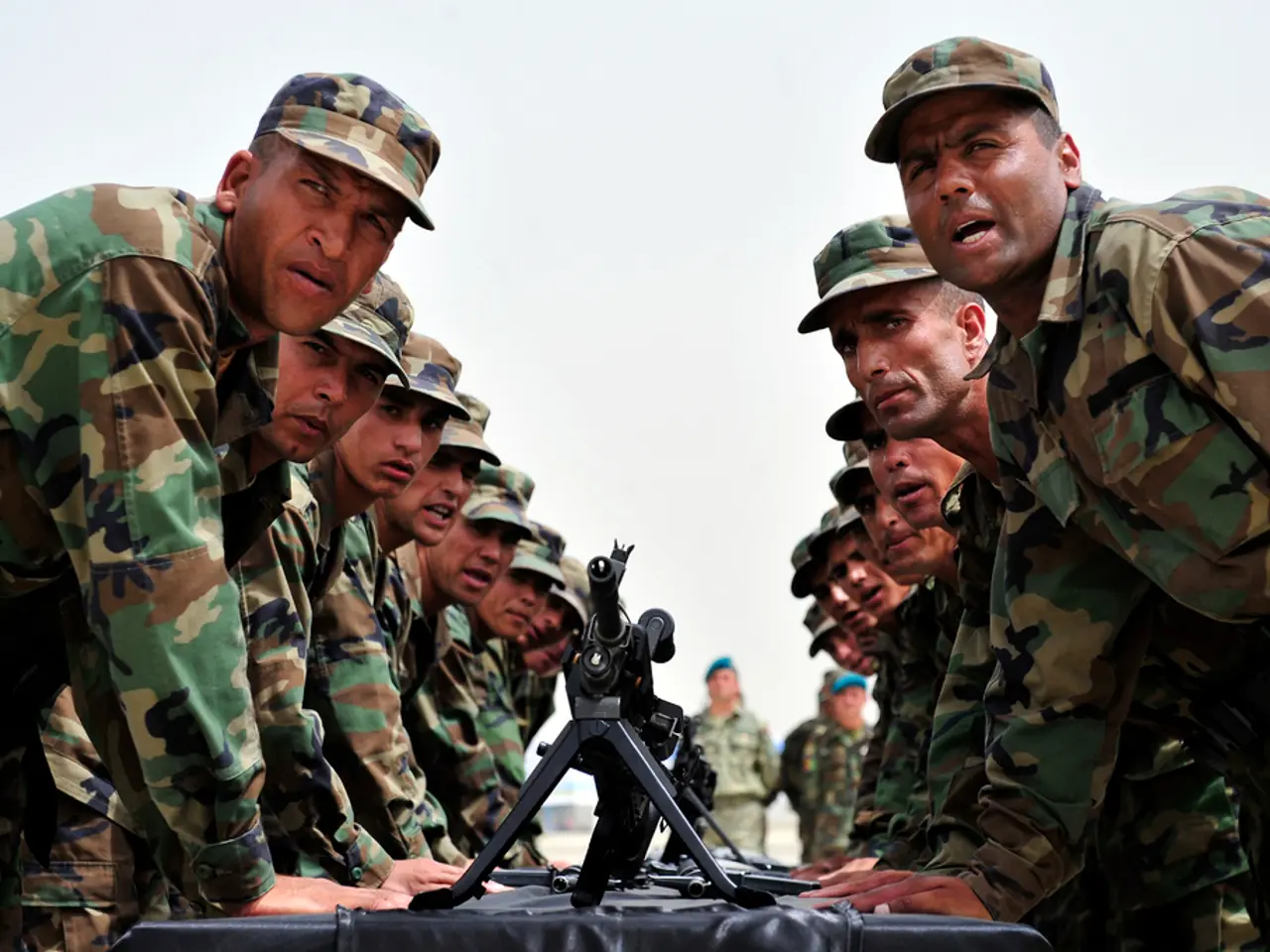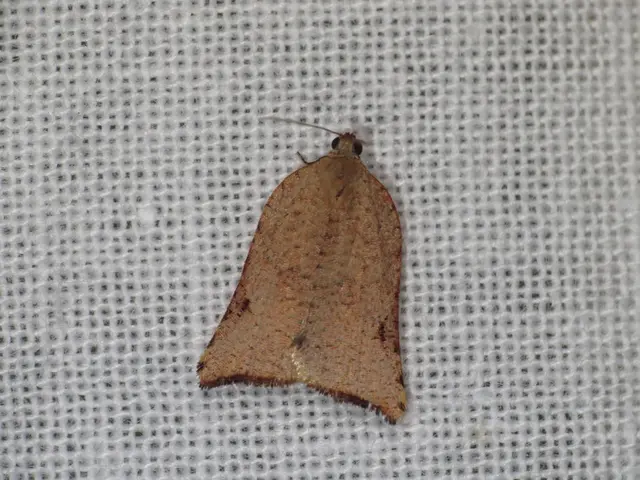Russian Shahed drones showing an augmented usage of Chinese components, according to Ukrainian intelligence
In the ongoing conflict in eastern Ukraine, heavy clashes between Russian attackers and Ukrainian defenders have been reported, with the Ukrainian general staff reporting a total of 149 Russian attacks over the past day, supported by 1275 combat drones and 61 Russian combat aircraft.
Meanwhile, civilians are being evacuated from dangerous areas in the Sumy region, as the boom in the arms industry since Russia's attack on Ukraine has seen the membership of an industry association skyrocket.
Amidst these developments, recent intelligence and investigative reports indicate a significant increase in the proportion of Chinese-made components in Russian Shahed (Geran) drones used in the conflict with Ukraine.
By early 2025, approximately 80% of the electronics in Russian drones, including Shahed variants, were reportedly sourced from China according to Ukraine’s Security Service and Foreign Intelligence Service. More specifically, analyses of wreckage from Russian drones recovered in May and July found that 60–65% of components, such as circuit boards, navigation modules, communication devices, and catapult launch mounts, were manufactured in China.
These findings include parts marked from notable Chinese companies like Suzhou Ecod Precision Manufacturing Co., Ltd. Recent modifications observed in these drones involve upgrading satellite navigation antennas with larger element arrays to improve electronic warfare resistance and the integration of 3G modems in telemetry systems for enhanced data transmission and battlefield analysis.
There are also ongoing developmental efforts reported, including new strike drones powered by jet engines and warheads adapted to perform better in adverse weather conditions, reinforcing the evolving sophistication of these Chinese-component-heavy systems.
The discovery of Chinese-made parts in drones used to attack Kyiv was highlighted as particularly symbolic by Ukrainian officials, since just a day prior, Russia’s strike also lightly damaged the Chinese Consulate General in Odesa — underscoring the complex entanglement of China’s role in the conflict.
The use of Chinese components in Russian drones has prompted criminal investigations by Ukraine, which classifies such drone strikes as war crimes and calls for increased international pressure on all parties supporting Russia's war effort.
Elsewhere, the Russian Ministry of Defense reported intercepting 120 drones on Russian territory from July 5 to 6, while Russian air defense units shot down six Ukrainian drones headed for Moscow on Sunday. Kyiv was again targeted by Russian drone attacks, damaging several buildings, but no fatalities were reported.
However, four people were killed in Russian attacks on several Ukrainian regions overnight, and two deaths were reported in the Sumy region, one person was killed in the Odessa region, and another fatality was reported in the Kherson region. Thirty-six people were injured in the attacks in the affected regions.
No date has been set for a new round of talks between Moscow and Washington, and the BRICS nations criticized a joint statement condemning the recent attacks on Russian railway infrastructure. The Russian statistics office Rosstat has stopped regular reporting on death tolls.
In addition, the federal government has no overview of the number of deployable helpers who would actually be available for civil defense tasks in the event of an attack, and numerous flights have been canceled at three major Russian airports: Sheremetyevo in Moscow, Pulkovo in St. Petersburg, and Strigino in Nizhny Novgorod, due to drone threats.
Two former employees of the Ukrainian Interior Ministry who took positions in the "Police of the People's Republic of Donetsk" must stand trial in absentia.
In conclusion, the trend is clear: Russian Shahed drones rely heavily on Chinese electronics and components, with this share increasing steadily through 2025, pointing to China’s significant, albeit officially denied, role in sustaining Russia’s drone capabilities in the conflict with Ukraine.
- The boom in the arms industry since Russia's attack on Ukraine has led to a surge in membership of an industry association, yet the recent discovery of Chinese-made components in Russian drones raises questions about the community policy regulating the export of such technology.
- As artificial-intelligence advances, it is concerning that increasingly sophisticated drones used in the conflict with Ukraine are relying heavily on Chinese components, which has prompted investigations into potential war crimes and international pressure on all parties involved.




